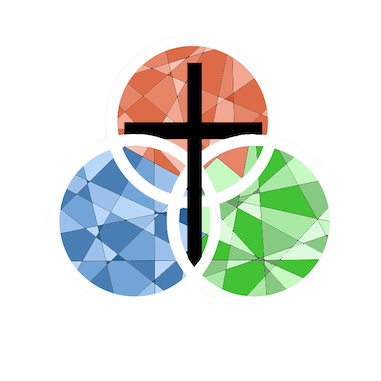The Church Year
The church year (also know as the Liturgical Year or the Liturgical Cycle) divides the calendar year into a series of seasons and special festivals that reflect the story of Jesus and of the church Jesus founded.
The Seasons of the Church Year
The Lutheran church observes two cycles of seasons:
The Christmas cycle begins with the first Sunday of Advent four Sundays before December 25, the Nativity of our Lord, and concludes with the Epiphany on January 6. The Christmas cycle is “fixed,” because it falls on the same dates each year.
The Easter cycle begins with Ash Wednesday, which is forty days before Easter and concludes with Pentecost on the fiftieth day of Easter. The Easter cycle is “moveable” because it is determined by the date of Easter which is set by the lunar calendar and varies from year to year.
The time after Epiphany and before Ash Wednesday, and the time after Pentecost and before the first Sunday of Advent is called “Ordinary Time” or “Time after Epiphany” and “Time after Pentecost.”
The Festivals of the Church Year
The Lutheran church also observes a number of festivals during the church year. The main festivals include:
The Nativity (Christmas)
The Epiphany
Ash Wednesday
Palm Sunday
Maundy Thursday
Good Friday
The Resurrection (Easter Sunday)
The Ascension
Pentecost
Holy Trinity Sunday
See also "The Church Year" in Evangelical Lutheran Worship (Augsburg Fortress, 2006), 13-17.
The Colors of the Church Year
Advent: “Blue is associated with Advent, suggesting hope. This association originated in Scandinavia, probably because purple dye was too expensive for churches to use. Some assemblies use purple in Advent, a color associated with royalty as the church awaits the newborn king.”
Christmas: “White, calling to mind the purity of the newborn Christ, and to our light and joy in him. Some also use Gold.”
Epiphany: White
Baptism of Our Lord: White.
Sundays after the Epiphany: “Green is used for its symbolism of our growth in Christ. Green, in a sense, is a "neutral color," used when more festive or more somber color is not appointed.
Transfiguration: White
Ash Wednesday: “Black is the preferred color, since it is the color of the ashes to which we will all return. Purple is the alternate color for this first day of Lent.”
Lent: “Purple is typically associated with Lent, suggesting repentance and solemnity.”
Sunday of the Passion (Palm Sunday): “Scarlet is the preferred color of this first day of Holy Week, as it suggests the deep color of blood. (Scarlet is to be distinguished from the brighter color of red, which is appointed for the Day of Pentecost, martyrs’ days, and certain church celebrations). If a parish does not have scarlet vestments, purple may be used.”
Days of Holy Week: “Scarlet or purple may be used for Monday, Tuesday, and Wednesday of Holy Week.”
Maundy Thursday: “For this fourth day of Holy Week, celebrated as the institution of the Lord’s Supper, scarlet or white is used.”
Good Friday: “No vestments or paraments are used on this day, after the stripping of the altar on Maundy Thursday night.”
Vigil of Easter: “White or Gold suggests of joy in the Resurrection is used on this night.”
Easter Day: “Gold or white is suggested for this day. The gold color symbolizes that this day is the ‘queen of feasts,’ unique in the entire church year.”
Sundays of Easter: “White suggests the joy of the resurrection.”
Day of Pentecost: “Red as the color of fire is used on this day when we remember the tongues of fire descended on the crowd in Jerusalem. In contrast to the color of scarlet, Pentecost’s red is a bright color.”
The Holy Trinity: “White is suggested, the expression of joy in the mystery of the Triune God.”
Other Sundays after Pentecost: “Green is used, to indicate our growth in faith as we follow the teachings and ministry of Christ. Some assemblies use differing shades of green throughout the Sundays after Pentecost, a lighter green in summer and a darker green in fall.”
Quotes from the ELCA’s “What is the meaning and use of liturgical colors?”
Additional Resources
- Center for Spiritual Resources has a number of book suggestions on the Church year. http://www.thecsr.org/resource-directory/the-liturgical-year-a-bibliography/
